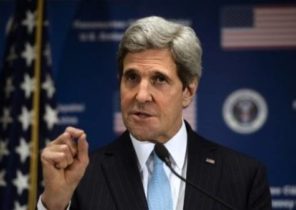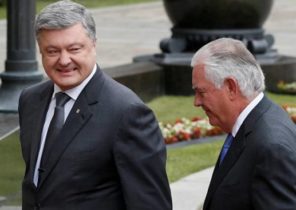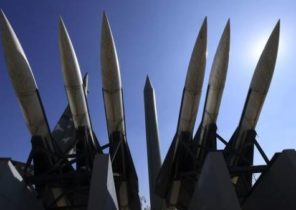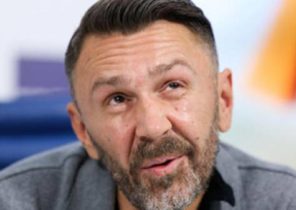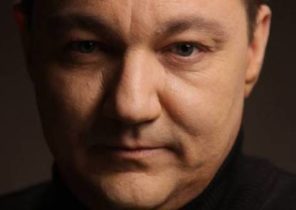
Loud sounds of salsa coming from next door bar, do not interfere with the Sheikh Munir of Valencia (Valencia Munir), who prays in his house, which became a mosque in a poor, suffering from the violence in the Colombian city Buenaventura.
After the prayer, Valencia shoots brown tunic, sits at a plastic table and starts telling about how it functions as a spiritual leader in his Islamic community.
A small community of Muslims, Afro-Colombian descent, living in the main port city of Colombia on the Pacific ocean, has for several years followed the teachings of the “nation of Islam” (Negro religious and nationalist organization, founded in 1930 in the USA approx. lane), and then the Sunnis and Shiites.
Faith caught the Muslims of Buenaventura that gave hope to the power of blacks. They say that Islam found refuge from poverty and violence that prevail in the city, where there is the largest number of killings in Colombia.
Islam came here in the late 1960s years, thanks to the African-American sailor originally from Panama Esteban Melendez Mustafa (Mustafa Esteban Meléndez), which was distributed to port workers the teaching of the “nation of Islam”, where there are elements of the Muslim faith and black nationalism.
“He talked about the self-esteem of blacks, and this philosophy had a great impact. Teachings penetrated the hearts and minds of many people,” said Valencia, adding that this occurred in a period of deep changes in society.
Melendez started going to Buenaventura in the period when the rural population of Colombia have migrated to the cities, losing in the resettlement process, communication with relatives, says sociologist Diego Castellanos (Castellanos Diego), studying the various religions of Colombia, which in the majority is a Catholic country.
“”Nation of Islam” offered an alternative identity, which helped to fight the entrenched in Porto racial discrimination, he said. — 90% of the population of Buenaventura — Afro-Colombians”.
The first wave of converts were overwhelmingly political, rather than spiritual in nature. People said prayers in English or Spanish, most did not read the Koran, and political leaflets, and had little idea about the major tenets and rules of Islam, says Valencia.
The attractiveness of the “nation of Islam” gradually began to wane because Melendez came to Buenaventura less, and the local community began to realize the fallacy of the ideas of the superiority of the black race, especially because Colombia never had the racial hatred and laws of segregation that existed in the United States.
Following the example of Malcolm X, who broke with the “Nation of Islam” and until his death in 1965, professed Sunni Islam, one Muslim from Buenaventura went to Saudi Arabia to study Islam and on returning home, convinced of the community to embrace a more Orthodox faith.
“So we became the Sunnis, says Valencia, who was raised in the Catholic faith, and who had intended to become a priest, until he converted to Islam. We learned to read Arabic, we read Quran, we don’t consider United States, look towards Saudi Arabia”.
The Muslim community of Buenaventura asked for the support of other Sunni groups in Colombia, but two of their world proved to be extremely different.
Buenaventura is located in the South-West of Colombia between the vast jungle and Pacific ocean. Muslims there are black, poor and unaccustomed to the beliefs and traditions of Islam. Established in the country’s Sunni community, of Arab origin, and it consists of wealthy merchants, living mainly in the busy shopping town of Maicao, located in the North-Eastern desert of the country on the border with Venezuela.
The relationship of this Arab community is not developed, except for a few charitable donations in the form of parcels of food.
What happened in 1979 in Iran, the Islamic revolution has breathed new life into the community of Buenaventura. With her came in contact with Shia mission to offer people scholarships and financial support. Valencia got a scholarship and went to study in Buenos Aires to the mosque Al-Tawhid, and then continued his education at the University of the city of Qom in Iran.
At this point of his story ringing cell phone. Ringtone chant in Arabic. Valencia says: “Salam alaikum”, and then starts talking at a rapid sentences in Spanish, as they say on the Pacific coast of Colombia.
Today, the community center and mosque for 300 members of the community is in the inner room of a house whose walls are decorated with portraits of Malcolm X and the Ayatollah Khamenei. On the other wall color mural depicting a branching family tree titled “Islamic genealogy of the prophets.” On Fridays for prayer comes from 40 to 50 people.
According to Valencia, due to his connections with Iran, Colombian and U.S. intelligence agencies have repeatedly conducted covert and not so covert investigations. “I have nothing to hide, he says. The Iranians will support us. But they are not jihadists”.
Valencia also manages two private schools, in which 180 children from the poorest quarters of the city study not only Latin alphabet, but Arabic alphabet. School Sylvia Zainab is located on the first floor of a rundown three-story house in one of the most violent areas of Buenaventura where criminal factions struggle for power over the territory and inhabitants are often caught in the crossfire.
The school allows you to get away from this terrible reality. Students greeted the guests with songs in Arabic about the greatness of Allah. In Spanish they are singing about “five prophets of creation”: Noah, Abraham, Moses, Jesus and Muhammad. One second-grader runs to the Board and proudly writes a three-digit number in Arabic.
Only every fifth student of this school from the local Muslim community. “We are not trying to proselytize, says Valencia. — We just teach children to respect other religions and traditions.”

